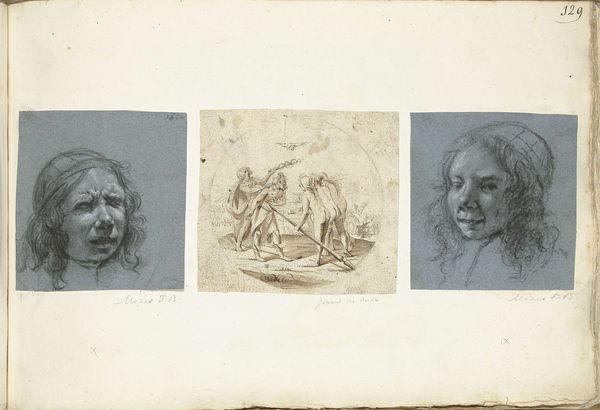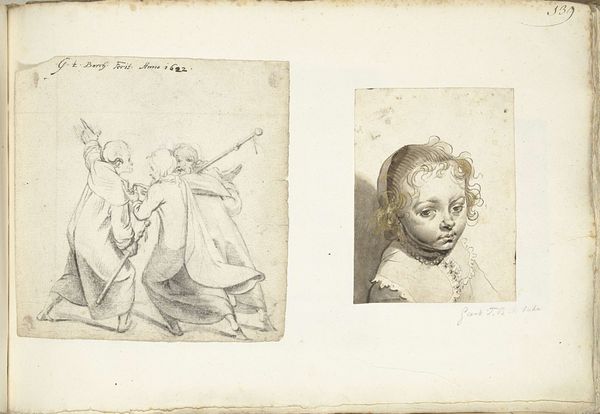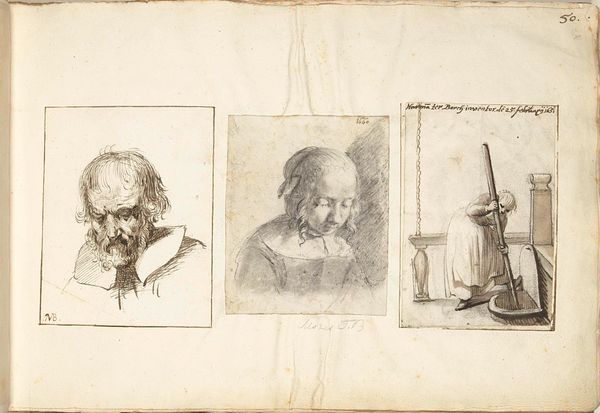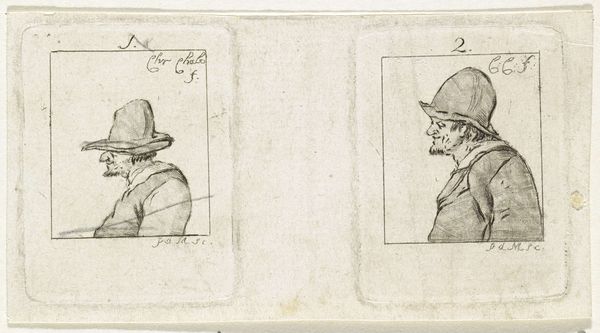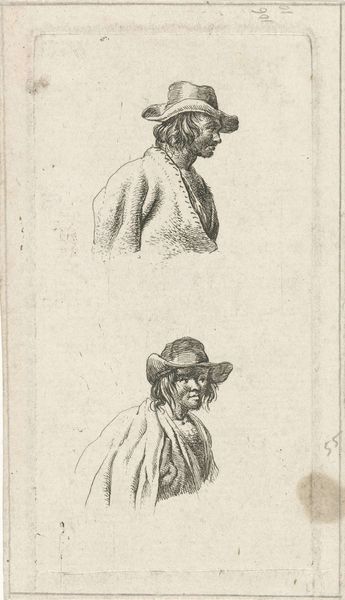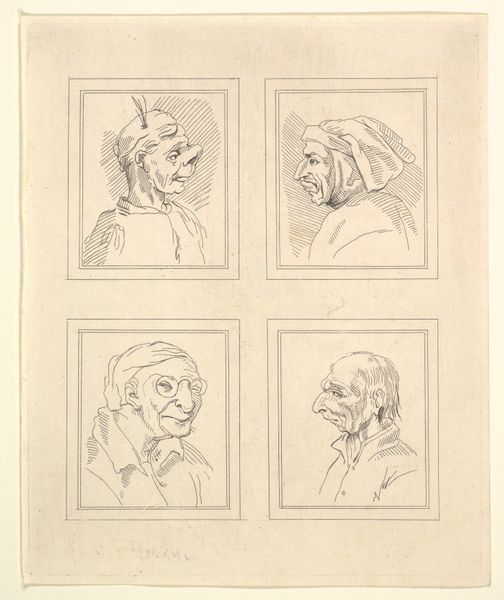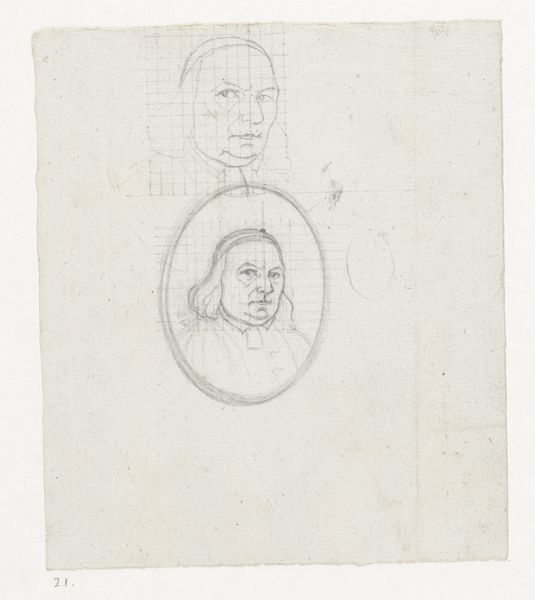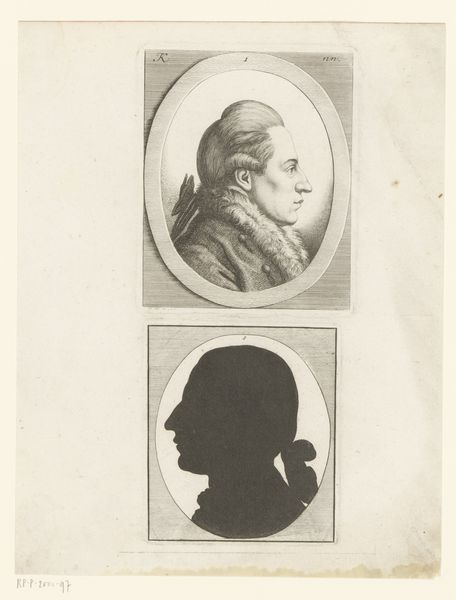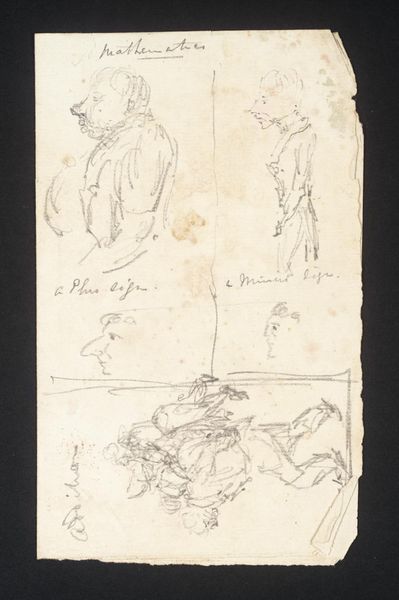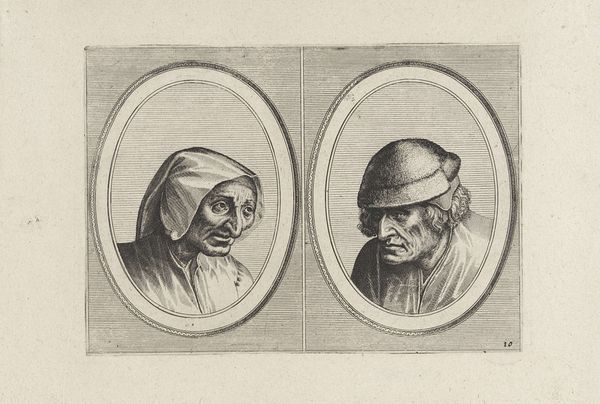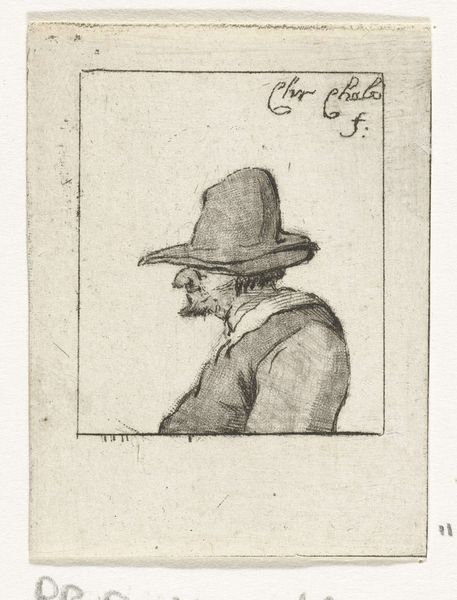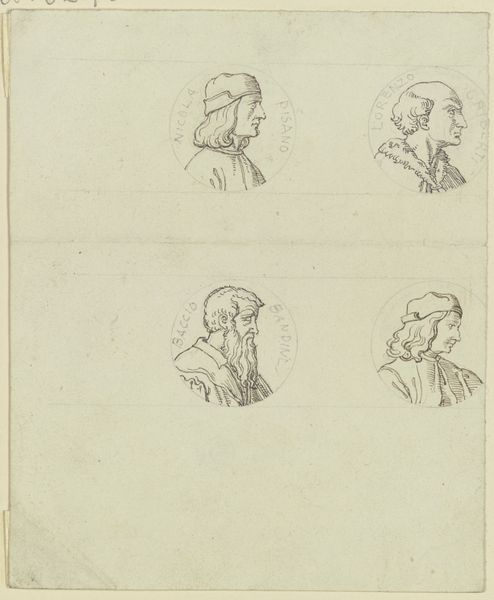
Twee vrouwenhoofden en een portret van Gerard ter Borch de Oude c. 1660
0:00
0:00
mosesterborch
Rijksmuseum
drawing, pencil
#
portrait
#
drawing
#
dutch-golden-age
#
figuration
#
pencil
#
genre-painting
Dimensions: height 243 mm, width 360 mm
Copyright: Rijks Museum: Open Domain
Curator: This pencil drawing, created around 1660 by Moses ter Borch, is entitled "Two Women's Heads and a Portrait of Gerard ter Borch the Elder." Editor: The arrangement immediately strikes me; the somber faces, framed in gray and balanced on either side of a livelier portrait in the center, create a rather compelling visual rhythm. Curator: I agree, and it's tempting to consider how these portrayals might reflect the societal positions afforded to the women versus the elder ter Borch during the Dutch Golden Age. The women seem constrained, almost cloistered, while the man exudes a confidence possibly granted by his gender and professional status. Editor: True, but consider the stark contrasts achieved solely through the variation of line work; the rough hatching around the central portrait compared to the gentle shading used for the women, suggests a deeper psychological study through purely formal means. The textures become symbolic in their own right. Curator: And that's fascinating, particularly when viewed through the lens of class. Perhaps this difference in textural representation mirrors class-based visual tropes prevalent in art meant for public display or familial legacy, versus intimate drawings meant for more private viewings. Editor: It's certainly possible. What about the compositional aspects themselves? Note how the Elder is presented in profile while the women look out at us; this lends the women some amount of agency. Curator: An agency undermined, I might add, by their garb. The veils almost seem designed to obfuscate and subdue their presence, a potent reminder of the limitations placed upon women. I believe this is especially poignant, even if only a subconscious, effect that the artist has generated. Editor: Perhaps. But either way, the piece generates a remarkable play of lines. Thanks to Borch's attention to formal values, these simple portraits have lasting expressive appeal. Curator: Precisely, and when read together these portraits also generate a great insight into Dutch Golden Age sensibilities. This piece allows a contemporary audience a complex glimpse at both social and aesthetic standards.
Comments
No comments
Be the first to comment and join the conversation on the ultimate creative platform.
